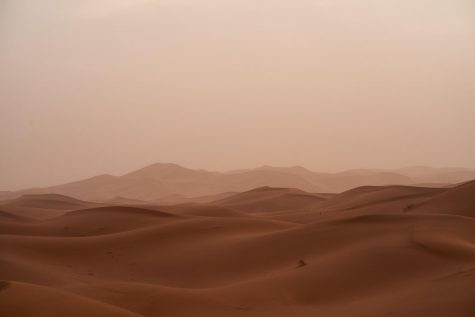Moroccan Magic
Morocco is filled with beautiful scenery and has lots of culture.
Photo by Victoriano Izquierdo on Unsplash
Morocco is known for there beautiful monuments and scenery.
Morocco is a North African country bordering the Atlantic Ocean and Mediterranean Sea. Spanning an area of 710,850 km2 27,460 sq mi (about twice the area of California), it has a population of 37 million (about twice the population of New York). The majority of its citizens follow the religion of Islam and its most prominent languages are Arabic and Berber. The Moroccan dialect of Arabic and French are also widely spoken. Moroccan culture is a vibrant mix of Berber, Arab, and European cultures. Its capital is Rabat, while its largest city is Casablanca.
Moroccos history began in 1,000 BCE when Phoenicians sailed there. Morocco remained under Roman rule until the 5th century AD. In 681 the Arabs began raiding Morocco and by 705 they were in control. Morocco soon broke up into a number of different kingdoms. The next Berber dynasty was called the Wattasids. They began to seize power in 1240 and they ruled all of Morocco by 1469. Under Moulay Ismail 1672-1727 Morocco was a strong, centralized state. During the 19th century Morocco remained an independent country.

Moroccos political system is a parliamentary constitutional monarchy, the Prime Minister of Morocco is the head of government, and of a multi-party system. Morocco isn’t perfect, they face at some human rights problems, such as poor prison conditions, the mistreatment of women and the LGBT community, and the use of torture by police.
Wikipedia states that Morocco has also become a major player in African economic affairs and is the 5th largest African economy by GDP (PPP). Morocco’s strengths are favorable geographical location, close to the European market, strategy to move to high-end markets and diversify industrial production, political stability and commitment to reform, growing integration in the African market, support from the international community, particularly Europe.

Newspapers in Morocco are published in Arabic and French, and sometimes in Berber, English, and Spanish. Africa Liberal, a Spanish daily, was the first paper published in the country which was launched in 1820. Al Maghrib was the first Arabic newspaper of the country and was set up in 1886. In 1999, the number of French language newspapers distributed in the country was 130,000. According to The View From Fez and Wikipedia in 2013, 71% of the papers were published in Arabic and 27% in French. The government of Morocco owns most of the main media outlets, including Moroccan radio and television, and the Moroccan press agency, Maghreb Arab Press. Moroccans have access to 2,000 domestic and foreign publications and many of the dailies/weeklies can now be accessed on their own Web sites.

Morocco is an interesting country with a rich history. It is filled with culture and very interesting lifestyles. Morocco’s culture is a unique blend of religious and ethnic traditions, such as, Berber, Arab, African, Mediterranean, and Jewish influences. Moroccans greet one another with a handshake and friendly inquiries about health, happiness, and family. Business is not discussed until after these introductions. They are still a culture of strong beliefs and social norms, so any offense to them must be avoided no matter what. Things that might seem ordinary in our culture may be taken the wrong way in the Moroccan culture. The kanbrik website says that “In Morocco, locals do not kiss in public. Never. It is against the law, especially before marriage (it is forbidden publicly). Kissing in public is “an act of aggression against Moroccan Muslim society and people” a behavior otherwise deemed “indecent” by the authorities of the country.” Some more fun facts are Morocco in Arabic is Al Maghreb which means “the place where the sun sets,” it borders two seas, it is only 8 miles from Europe, and there are no camels in Morocco only dromedaries, a one humped camel used for racing.


